- Home
- Ernest Hemingway
Dateline- Toronto Page 48
Dateline- Toronto Read online
Page 48
We depart bearing vast quantities of mistletoe, which we present, formally, to the headwaiter of the Grand d’Italia Restaurant. The waiter is touched by this Canadian custom and makes a fitting response.
We leave, chewing cloves, for the mistletoe shop. Under the small remaining quantity of mistletoe, we demonstrate the sacred Canadian custom. Eventually the chaperones return. We are warned by a whistle up the street.
Thus the true use of mistletoe was brought to Northern Italy.
Christmas in Paris
Paris with the snow falling. Paris with the big charcoal braziers outside the cafés, glowing red. At the café tables, men huddled, their coat collars turned up, while they finger glasses of grog Americain and the newsboys shout the evening papers.
The buses rumble like green juggernauts through the snow that sifts down in the dusk. White house walls rise through the dusky snow. Snow is never more beautiful than in the city. It is wonderful in Paris to stand on a bridge across the Seine looking up through the softly curtaining snow past the gray bulk of the Louvre, up the river spanned by many bridges and bordered by the gray houses of old Paris to where Notre Dame squats in the dusk.
It is very beautiful in Paris and very lonely at Christmastime.
The young man and his girl walk up the Rue Bonaparte from the Quai in the shadow of the tall houses to the brightly lighted little Rue Jacob. In a little second-floor restaurant, The Veritable Restaurant of the Third Republic, which has two rooms, four tiny tables and a cat, there is a special Christmas dinner being served.
“It isn’t much like Christmas,” said the girl.
“I miss the cranberries,” said the young man.
They attack the special Christmas dinner. The turkey is cut into a peculiar sort of geometrical formation that seems to include a small taste of meat, a great deal of gristle, and a large piece of bone.
“Do you remember turkey at home?” asks the young girl.
“Don’t talk about it,” says the boy.
They attack the potatoes, which are fried with too much grease.
“What do you suppose they’re doing at home?” says the girl.
“I don’t know,” said the boy. “Do you suppose we’ll ever get home?”
“I don’t know,” the girl answered. “Do you suppose we’ll ever be successful artists?”
The proprietor entered with the dessert and a small bottle of red wine.
“I had forgotten the wine,” he said in French.
The girl began to cry.
“I didn’t know Paris was like this,” she said. “I thought it was gay and full of light and beautiful.”
The boy put his arm around her. At least that was one thing you could do in a Parisian restaurant.
“Never mind, honey,” he said. “We’ve been here only three days. Paris will be different. Just you wait.”
They ate the dessert, and neither one mentioned the fact that it was slightly burned. Then they paid the bill and walked downstairs and out into the street. The snow was still falling. And they walked out into the streets of old Paris that had known the prowling of wolves and the hunting of men and the tall old houses that had looked down on it all and were stark and unmoved by Christmas.
The boy and the girl were homesick. It was their first Christmas away from their own land. You do not know what Christmas is until you lose it in some foreign land.
W. B. Yeats a Nighthawk
The Toronto Star Weekly
December 22, 1923
William Butler Yeats, the Irish poet, who was this year awarded a Nobel Prize for literature, is remembered with something akin to terror by a Toronto man whom he compelled to keep a very unwelcome vigil. This gentleman was his host at the time of his last visit to Toronto [February 2, 1920]. He expected that after the fatigue of his lecture at Hart House the poet would be ready to slumber, but Yeats proved to be a real Dublin nighthawk. Perhaps it would be more appropriate to call him a nightingale.
Anyway, his lecture had made him thoroughly wide-awake and put him in a wonderful conversational mood. He told literary anecdotes. He crooned Erse sagas. One o’clock struck. Two o’clock struck. Yeats grew fresher than ever, but his host was yawning, hollow-eyed, on his chair. He was not accustomed to late sessions with the muses.
The only thing that kept him awake was a terrible fear that he might fall off his chair and disgrace himself forever. At last, about four in the morning, either the poet became exhausted or he observed his host’s somnolent condition. Anyway, he called the seance off and went to his bedroom.
He must have passed an exceedingly restless night, for in the morning it looked like ex-Premier Nitti’s house after the Fascisti had got through with their visit. The bedclothes were strewn everywhere in great confusion. When it was all sorted out it was found that the poet had left behind his hairbrush and pajamas and a few other articles indispensable to his toilette.
The host had to send these articles by special delivery to New York, so that Yeats might present his usual immaculate appearance to his audience. In spite of the honor of entertaining a genius, this Toronto admirer of poetry in future will prefer for domestic comfort one of our more sedate Canadian poets.
Yeats recently received the Nobel Prize in person at Stockholm. But Sweden’s capital is famous for its nightlife. It may be that his Swedish host easily beat him in an all-night contest. In Toronto at any rate the poet was an easy winner. His host remembers him not as a nightingale but as a nighthawk and a nightmare.
Young Communists
The Toronto Star Weekly
December 22, 1923
Three hundred children of Toronto will never again know Christmas.
No. They are not dead.
Although they are nearly all very poor children they have no need for the Star’s Santa Claus Fund. They have renounced Santa Claus.
Christmas for them is only going to be the twenty-fifth day of December. For they have set their feet on the stern, flinty path of communism. And on the road that they must go Christmas is regarded as an objectionable survival of a barbaric custom. There is no Christmas in the good Communist’s calendar. Toronto’s three hundred young Communists are not due for another holiday until March 18, the anniversary of the Paris Commune.
Who are the three hundred child Communists of Toronto?
Some time ago a local minister charged from his pulpit that there were four “red Sunday Schools” holding meetings in Toronto every Sunday. No details were given.
There are five of these so-called “Sunday Schools” at present in Toronto. Communist leaders make no attempt to conceal their existence.
They are divided into Ukrainian, Finnish and English sections and are in reality groups where children can be directed in their development into Communists. Every effort is made to do away with the usual school idea. There is no teacher and no pupil. Development is aimed at rather than instruction.
Now what are Communists? Most Toronto people lump Socialists, Syndicalists and Communists vaguely together as Reds and let it go at that.
Roughly speaking the Communists believe in the abolishing of capital, the dictatorship of the proletariat or laboring class, and the necessity of a revolution to bring these ends about.
Communists are not to be confused with Socialists, Social Revolutionaries, Syndicalists or any milder believers. These children’s groups in Toronto are Communist groups.
The Finnish group, which is directed in its activity by Mrs. F. Custance, who spent four months of last year in Moscow studying the Young Communist work, is the most highly organized. It has fifty children as members. They call themselves the Don Hall Young Comrades Club and hold their meetings at the Don Hall, 957 Broadview Avenue, each Sunday.
There are thirty children in the English group. It is known as the Young Communist League Group and holds its meetings each Sunday at Denison Avenue and Queen Street.
Ukrainian children are organized into three different groups in east, west and center Toronto. The
re are 188 children in the Ukrainian organization, which is under the same direction as that which is under fire at present in Port Arthur, Ont.
This gives only 268 children altogether, but the figure of 300 was furnished by Communist headquarters and may be accounted for by other organizations on which data has not yet been obtained.
A green-covered, paper-bound book with a five-pointed Russian Soviet star in black on which are seated five little children on the cover gives the aims and methods of procedure in forming the groups of Communist children.
It is headed, “Manual for Leaders of Children’s Groups,” published by the executive committee of the Young Communist International.
It starts by declaring, “The Communist children’s groups must be neither party kindergartens nor children’s homes. They must be live organizations of the children of the workers, organizations to counteract the poison of the bourgeois education.”
Then comes the manner of attack outlined. In big black type the book asks “HOW DO WE BEGIN!”
“Nothing in the world is easier than to attract children. Where there is a will there is a way. Youths, boys and girls of the Young Communist Leagues go in a group to the places where children are—on the streets in the evening, in parks, public playgrounds, or at some outdoor celebration. They watch the children at play and gradually and tactfully join in their games, perhaps teaching them a new circle game which all can join. Other children are attracted and approach to play the new game. After a while when the children are a little tired, “Shall we learn a new song?” At first the little ones may be suspicious, then they will be shy, but eventually they will all join in ‘The Red Flag,’‘The Internationale,’ or some other revolutionary song.”
That is a quotation from the manual for use here among the children of Toronto. That is the method advocated for making Young Communists.
The manual continues. “Or one may go among the proletarian parents. In this trade union hall, or that clubhouse, or some other room or park or garden we meet on these days. Let your children come. The children will beg their parents for permission to attend and they will bring their friends and playmates. Children are naturally excellent agitators.
“Of course, there will be cases where the parents will refuse to permit the children to come. The mass of the adult proletariat is extremely petty bourgeois in its home life. These parents must be made the subject of special attention by the Communist leaders.
“There will be instances where the adults will use coercive measures. If the child is determined and energetic it will oppose the will of reactionary or backward parents and will attend the meetings despite the prohibition of the parents. More sensitive children will endure great internal conflicts, and with these, especially, great understanding and patience must be used. The active measures to be used by the leaders will depend upon whether the parents are merely backward proletarians or conscious reactionaries and social patriots.”
There is a quotation that the average conscious reactionary of a parent can chew on for some time.
We can now shut the green manual for a little while for a trip out to Dovercourt Road and Queen Street to watch young “Reds” in the making.
It is Saturday night. The meeting is to be held in the Templar Hall. In the hallway outside the door is a board table selling pink and green pop. There is a sentry at the door. He is serious-eyed and perspiring.
Inside the hall is dark except for the stage at one end, where there are two green canvas pillars and a backdrop painted with trees that look like the illustrations of trees in the coal age. The dark hall is filled with parents, relatives, and friends. All Ukrainian. All dressed up.
On the brightly lighted stage against the poisonous green backdrop sits a triple row of children. They all have mandolins and are playing away with terrific childish seriousness. An exceedingly thin Bulgarian, spectacled, sat at the end of the front row and led the playing.
In the hall stolid faces, intelligent faces, tired faces looked up at the stage, and on the stage sat the children. The child Communists. The young “Reds.”
They didn’t look very dangerous. One little girl was about nine years old, with hair the color of rice straw and rosy pink cheeks. She turned her toes in as she played and kept her eyes on her mandolin.
One little boy had big glasses that made him look like a frog.
There was one really beautiful child, dark, quick-eyed, childish beauty.
But most of them were just ordinary-looking kids. Blondes predominating, since they came from Little Russia, all cheerful-looking and all deadly serious in their playing.
“Easy,” hissed the Bulgarian music leader in English as they played their piece over again softly.
They gave a long program of mandolin and violin music and folk choruses. The folk choruses were delightful, the mandolin playing was not bad, and the violin playing was absolutely terrible.
Then they went off the stage and up into the gallery, and a gaunt-faced, handsome, dark young man with sideburns, and the light of revolution in his eye, came out and made a long speech. He was the leader of the group.
He spoke in Ukrainian, which sounds like low German spoken by a man with a hot potato in his mouth.
His speech was to the effect that before the war eastern and western Galicia were two of the most illiterate and backward countries in the world. Now the part of Galicia under Polish domination is more backward and illiterate than ever. But in the part under Soviet rule excellent schools have been established and Galicians from Poland constantly run away into Soviet Russia to get an education.
It was a very long speech, and during it nearly everyone in the audience became restive. The children in the gallery temporarily abandoned communism for the study of the woes of that noble proletarian, B. Google, and his class-conscious jockey Sunshine. They all seemed much more interested in comics than communism.
There was an intermission, then more music, several recitations, one from Zchewchenko, the Ukrainian national poet, and then a very fat man with a receding forehead and a big jaw made another speech. This was shorter, and announced that classes would be instituted for grown-ups as well as children in history, geography and grammar. History to be taken up from the revolutionary standpoint. The fat man, whose face was very pleasant when he smiled, but would curdle milk if he frowned, is a truck driver in his working hours and one of those very active in the groups.
Finally, the united mandolin, violin groups and choruses sang and played the march of the Red Army and the “Internationale.” The first is a good, stirring march. The second is the most uninspiring tune I know.
They used to say in Italy that if the Reds had possessed any tune as good as the Fascisti hymn “Giovanezza,” Italy would have gone Bolshevist for good when the workers seized the factories. But nobody can fight or feel like dying to the strains of the “Internationale!”
As a whole the Ukrainian meeting seemed very much as any Ukrainian Nationalist organization would have been whether there had been anything Communistic about it or not. One felt that if the Ukraine had not happened to have been one of the federated Soviet republics of Russia, the meeting would have been the same except that the quality of the music would have been a little better.
The reason for this is that the parochial organization was all there for the Communists to take over. It is in starting an absolutely new organization that the manual of the Young Communist League aims. Some of its sections are much more startling.
On page 12 the green manual states: “The children’s groups are the militant community of children. They are the nuclei of the militant proletariat of the future. But they cannot be made militant communities by commands. They must become so, naturally, through experience and reason applied to experience. Communist education is not—as its opponents accuse it of being—the teaching of children to repeat ready-made formulae, the committing to memory of the A.B.C. of communism. It is neither the rational system commended in France nor yet the dogmatic system
used in Great Britain. The children who are being educated in the Communist children’s groups are not having their mental food served to them already prepared and semi-digested.”
Later on it states on page 16: “We Communists assert that the child must be enrolled as a fighter in the struggle of its class and must share the fate of its class. The petty bourgeois reformist pedagogues, the humanitarian Utopians, and the social reformers are shocked almost to the fainting point by this, or else they are outraged at the idea. Dogs may bark, but the train goes on just the same.”
Trouble is forecasted in this paragraph on page 13: “It is perfectly true that many features of our Communist children’s groups are not agreeable to the parents, especially to those who have the bourgeois ideology. The children who comes to us gain in self-confidence, in independent initiative, and in the development of their critical faculties. Their observation becomes more keen and espies the weaknesses and inconsistencies of their parents, and naturally the parents do not relish this. Being themselves the slaves of machinery during the day, they prefer to play the role of small gods at home. In their petty bourgeois egotism, in their desire for peace and comfort, they do not see the great progress the child is making. Their vanity is hurt—and no pain is more severe than hurt vanity—by the pitiless criticisms of the child.”
What is the child to be made by all this? What is the end in view?
In “Can a Child Be a Fighter?” the manual states, “The Communist children’s movement has already obtained a quantity of valuable material dealing with the militant abilities of children. This is especially true in Germany where more than 30,000 children are organized.

 The Old Man and the Sea
The Old Man and the Sea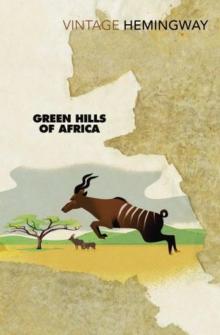 Green Hills of Africa
Green Hills of Africa The Sun Also Rises
The Sun Also Rises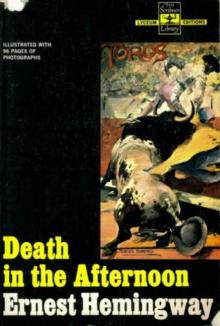 Death in the Afternoon
Death in the Afternoon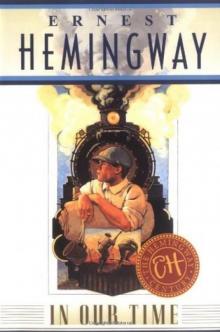 In Our Time
In Our Time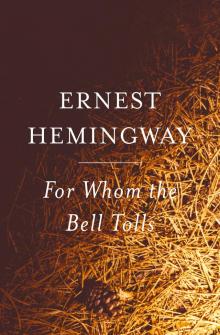 For Whom the Bell Tolls
For Whom the Bell Tolls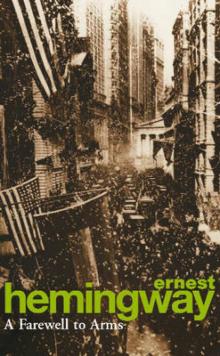 A Farewell to Arms
A Farewell to Arms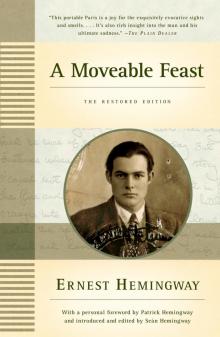 A Moveable Feast
A Moveable Feast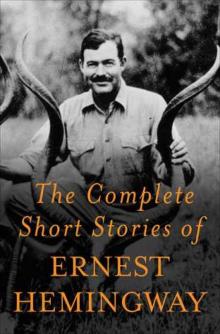 The Complete Short Stories of Ernest Hemingway
The Complete Short Stories of Ernest Hemingway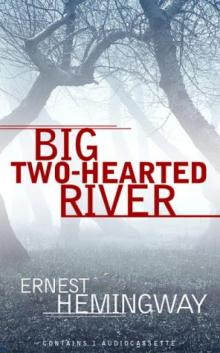 Big Two-Hearted River
Big Two-Hearted River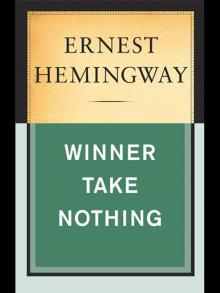 Winner Take Nothing
Winner Take Nothing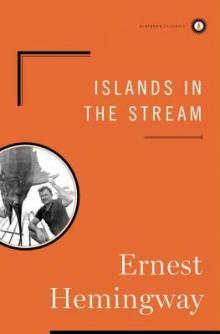 Islands in the Stream
Islands in the Stream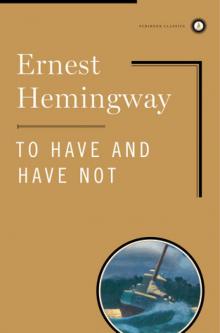 To Have and Have Not
To Have and Have Not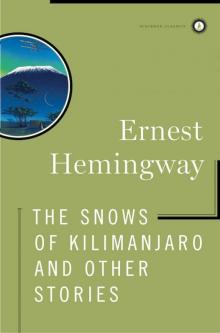 The Snows of Kilimanjaro and Other Stories
The Snows of Kilimanjaro and Other Stories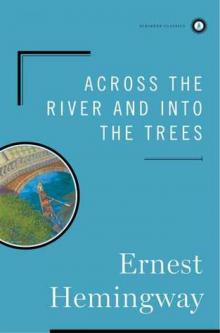 Across the River and Into the Trees
Across the River and Into the Trees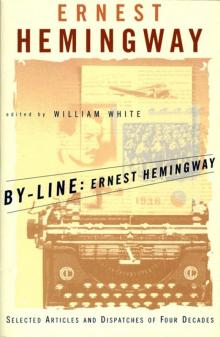 By-Line Ernest Hemingway
By-Line Ernest Hemingway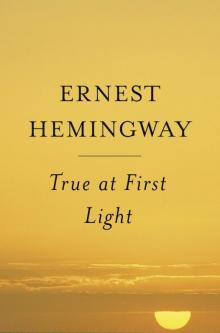 True at First Light
True at First Light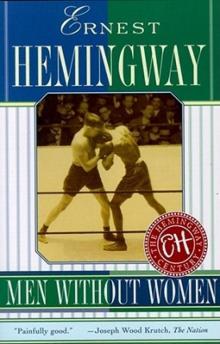 Men Without Women
Men Without Women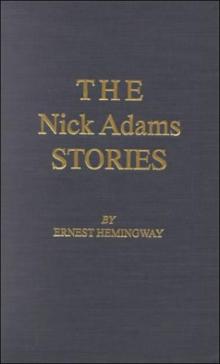 The Nick Adams Stories
The Nick Adams Stories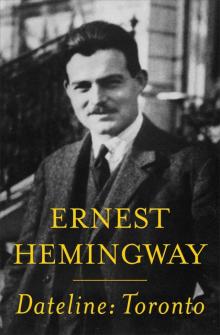 Dateline- Toronto
Dateline- Toronto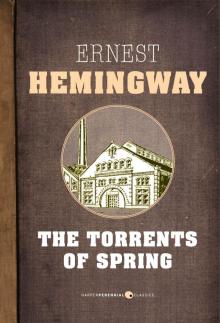 The Torrents of Spring
The Torrents of Spring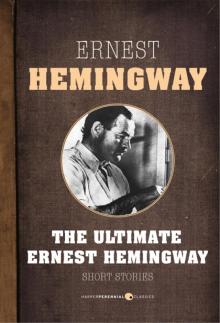 Short Stories
Short Stories